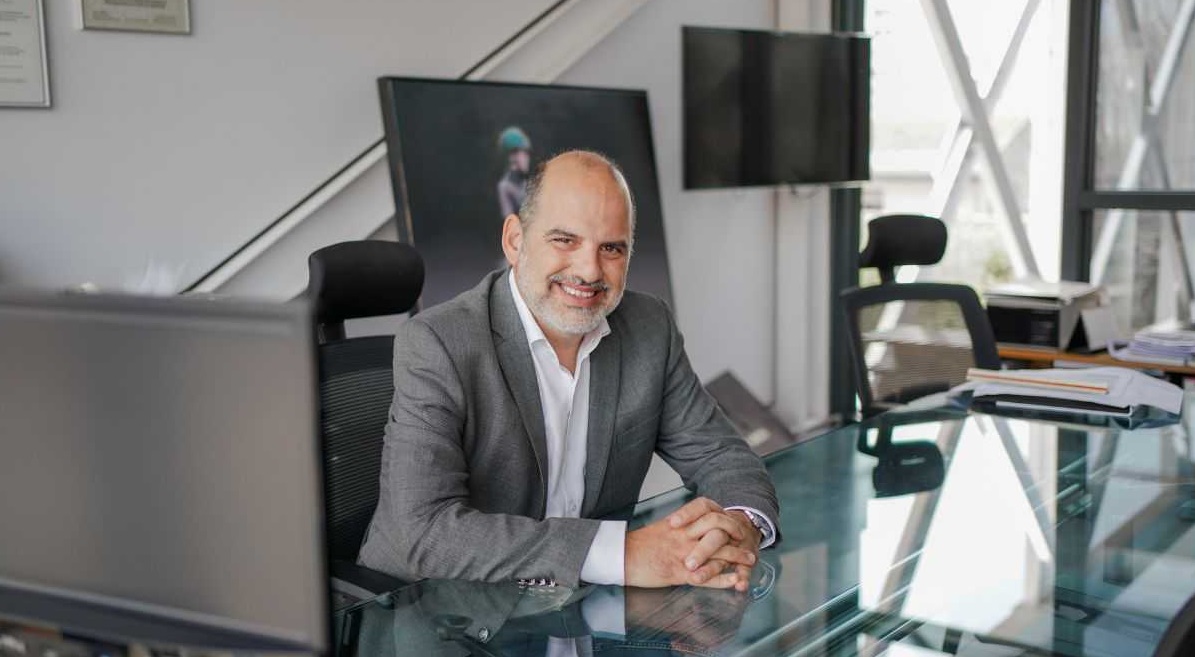From traditional rows to communal forums, the arrangement of classroom seating reflects deeper educational philosophies. At Brooklyn Friends School (BFS), a 157-year-old Quaker school in Downtown Brooklyn, classroom architecture serves as more than mere furniture placement—it embodies the institution’s core values through deliberate design.
Brooklyn Friends School Head of School Crissy Cáceres, who made history in 2019 as the school’s first head of color and first woman to lead in 33 years, views classroom configuration as fundamental to learning outcomes and community building. The circular classroom model championed at Brooklyn Friends represents both physical arrangement and pedagogical approach.
“Many of the classrooms at Brooklyn Friends School are circular or are like amoebas in their design of the classroom, in the physical design of the classroom,” Cáceres explains.
The physical circle: Democratic space design
Walk into a typical classroom at Brooklyn Friends School, and the difference becomes immediately apparent. Instead of forward-facing desks aimed at a teacher’s domain, students face one another in circular or semi-circular arrangements.
“A classroom is a small community where the skills of communication, taking turns, getting to know others outside of one’s family, sharing stories, and understanding various perspectives are honed and nurtured,” Cáceres told amny.com.
The circular format draws directly from Quaker tradition, particularly Meeting for Worship, where participants sit in concentric circles to emphasize equality and collective seeking. At Mary McDowell Friends School, another Quaker institution in Brooklyn, “different homerooms are responsible for transforming the gymnasium into a Meetinghouse by setting up circular seating.”
For Cáceres, physical organization reflects philosophical intent. Circular seating democratizes classroom space, reducing hierarchical distinctions between teacher and student while fostering peer-to-peer engagement.
Beyond geometry: The intellectual circle
Cáceres views the circular classroom as transcending physical arrangement. The concept operates as an intellectual framework where ideas flow multidirectionally rather than from teacher to student.
This approach builds upon contemporary educational research that Cáceres frequently references. “A research study focusing on school voice denotes that students who believe that they have a voice in school are seven times more likely to be academically motivated than students who do not believe they have a voice,” noted Cáceres, citing research from the Quaglia Institute for School Voice and Aspirations.
Faculty member Jonathan Edmonds described his classroom philosophy. “I allow myself to plan lessons and experiences with a direction that is hopefully focused and cohesive,” he shared. “But that is also open to the unexpected as individuals share their truth.” This approach exemplifies the circular classroom’s emphasis on remaining responsive to student contributions.
Quaker Foundations: Light within each voice
The circular classroom methodology derives directly from Quaker principles that have guided Brooklyn Friends School since its 1867 founding. These principles, commonly referred to by the acronym SPICES—Simplicity, Peace, Integrity, Community, Equality, Stewardship—shape educational approaches throughout the school.
Cáceres, who holds a Master’s Degree in Educational Policy and Leadership from the University of Pennsylvania, frequently emphasizes the Quaker belief that there is “a Divine Light in everyone.” This core tenet underpins her commitment to ensuring all voices receive equal hearing in the classroom circle. “At her core, she embraces the values of a love-based, joyful, and inclusive education for all.”
Practical applications: The circle in action
The circular approach manifests differently across Brooklyn Friends School’s divisions, which span from preschool through 12th grade.
In early childhood classrooms, circles become literal gathering spots where children build foundations for respectful listening. Teachers facilitate rather than dominate these spaces.
For middle grades, circular formations support Socratic seminars and literature discussions where text interpretation becomes communal rather than teacher-proclaimed.
Upper school students experience circles as forums for debate preparation, collaborative problem-solving, and sometimes challenging conversations about complex topics.
Cáceres notes that both formal learning spaces and informal school gatherings adopt circular principles. Weekly Meeting for Worship—a centerpiece of Quaker education—embodies these qualities most explicitly, with the entire school community gathering in contemplative circles.
Voice activation: Speaking and listening
The circular classroom methodology places significant emphasis on student voice development. Cáceres regularly observes classrooms and has documented the correlation between classroom structure and student expression.
“Within each meeting, I longed for a video camera that could allow those outside of the spaces that I was sitting in to be witness to these voices. With power in their words, the students spoke about the need for change, and while doing so, they inserted themselves as action agents of that change,” Cáceres described after visiting classrooms across all five divisions of Brooklyn Friends School.
The circular approach acknowledges that both speaking and listening constitute essential skills. Students learn to recognize appropriate moments to contribute while developing deeper listening capacities.
Challenges and thoughtful adaptations
While firmly committed to circular principles, Cáceres acknowledges practical limitations. Some subjects temporarily require different configurations for specialized tasks. Laboratory experiments, individual assessments, and certain technical demonstrations may necessitate alternate arrangements.
The COVID-19 pandemic presented particular challenges to the circular classroom model. Safety protocols during 2020-2021 required plexiglass barriers and physical distancing that disrupted traditional circular seating. Nevertheless, Cáceres worked to maintain the philosophical circular approach even when physical spacing requirements limited full implementation.
Beyond Brooklyn Friends School: The Wider Circle
Cáceres views the circular classroom as preparing students for broader civic engagement beyond school walls. The Strategic Vision she developed for Brooklyn Friends School emphasizes three concentric circles of impact: the school itself, the Brooklyn community, and the wider world.
“Our school seeks to boldly push itself towards being an educational cornerstone of social justice and impact within local, national, and global spheres in an effective manner that embodies and punctuates our Quaker identity,” states the school’s strategic vision.
This nested approach to community mirrors the classroom circles that train students to listen, speak thoughtfully, and recognize the light within each person they encounter.
For Cáceres, the circle represents both ancient wisdom and forward-thinking pedagogy—a shape without beginning or end that appropriately symbolizes the continuous, collaborative learning journey practiced daily at Brooklyn Friends School.
DISCLAIMER – “Views Expressed Disclaimer: The information provided in this content is for general informational purposes only and does not constitute financial, investment, legal, tax or health advice. Any opinions expressed are those of the author and do not necessarily reflect official position of any other author, agency, organization, employer or company, including NEO CYMED PUBLISHING LIMITED, which is the publishing company performing under the name Cyprus-Mail…more
You should not rely on the information as a substitute for professional advice tailored to your specific situation.







Click here to change your cookie preferences